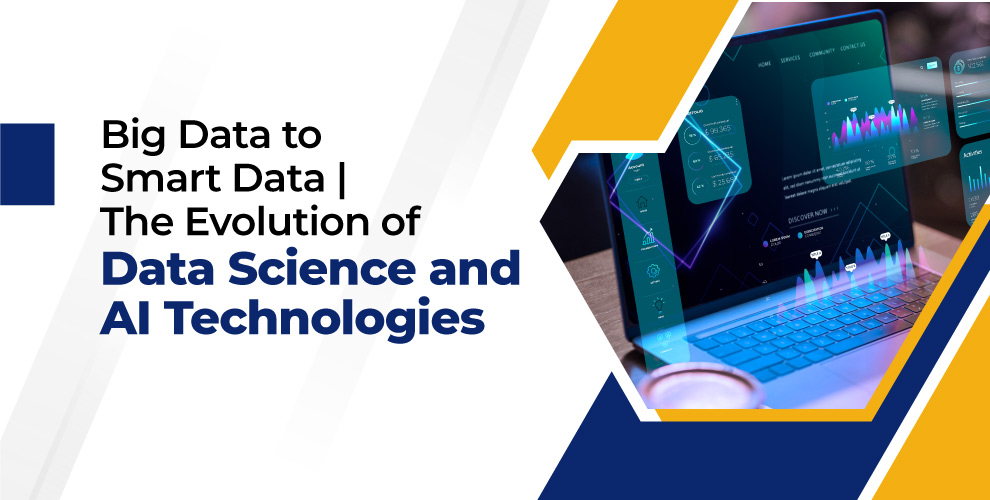In recent times, big data is conquering the business world as it gives rise to data-driven decisions. However, businesses struggle with collecting and analyzing the data because there is a high chance that details may be missed, and thus smart data comes into play.
When using big data, the focus is to collect as much data as possible. However, businesses realize that collecting data is beneficial only when you are good at analyzing and using it effectively. Thus, now companies are shifting their focus to hiring data scientists rather than investing time in data analytics.
Smart data’s role is to filter, clean, and organize data from big data, providing meaningful, actionable, and valuable information. The use of data science and AI technologies helps in extracting smart data from unstructured text or data.
Thus, students can learn big data analytics by choosing the B Tech in Data Science and Artificial Intelligence courses available at top colleges in Coimbatore.
Difference Between Big Data and Smart Data:
Earlier, big data was a buzzword as businesses generated vast amounts of data, and companies struggled to get ROI from their big data investments. This is why advanced AI and machine learning algorithms help acquire smart data from big data, reducing the challenges.
Targeted and Accurate: From big data, it is complex to align with business priorities and pain points, which significantly reduces its value. In contrast, smart data is more targeted and precise, helping companies in a more practical and valuable way.
Quality : Smart data offers filtered and analyzed data that is easy for decision-making. In some cases, big data is often inaccurate, which leads to misconceptions.
Customization: Big data provides data that needs to be separated or is not customized for specific business requirements, whereas smart data provides information suitable for unique industries, allowing better outcomes and solutions.
Machine Learning Uses Smart Data : Some machine learning algorithms greatly benefit from being trained with less but more specific data, proving that more data is not always better in the field of machine learning.
The Emerging Trends of AI and Data Science Technologies:
Artificial intelligence is a game-changer for data analytics, and businesses are now making use of it. Therefore, here are some emerging trends in these fields that businesses need to incorporate:
Cloud Storage : Since terabytes of data are entering organizations, traditional physical data storage is no longer sufficient. As a result, cloud and hybrid cloud services are being selected more frequently for their superior flexibility. Also, companies are now deploying additional cloud-based solutions like data centers and warehouses hosted on the cloud.
Customer Data Collection : Consumer data, which is continuously linked to consumers as they use tech services like streaming devices, IoT devices, and social media, has been one of the major contributors to the increased volume of data. Organizations have to manage this personal data carefully and in compliance with data regulations like GDPR. Businesses today rely on best practices and software that prioritize ethically collecting data about consumers.
Automation: Using big data analytics to motivate AI/ML automation is one of the newest and most popular big data trends. You can only expect greater growth in predictive and real-time analytics opportunities as big data input for AI/ML solutions continues to rise.
Augmented Workforce : There have always been concerns about robots or machines taking the place of human laborers and possibly even making some jobs obsolete. However, there will be increasing employment opportunities with or without machines that use intelligent and cognitive functionality to enhance abilities as businesses streamline the data-consuming process and encourage an AI culture within their teams.
Cybersecurity : The World Economic Forum determined that cybercrime might be a greater threat to society than terrorism. Artificial intelligence plays a critical role in protecting us against crime by analyzing network traffic and understanding patterns that indicate malicious intentions.
Industry 4.0 is ongoing, and new developments in big data analytics technology are happening all the time. Thus, to stay one step ahead of competitors, businesses must adopt the appropriate trends.
Conclusion:
The evolving use of data from collecting to analyzing in better ways leads to incorporating artificial intelligence and machine learning, which helps in real-time analytics. This signifies that businesses can make better decisions and drive growth with more innovations and the evolution of AI technologies and data science. If you’re interested in learning more about big data and smart data, enroll in the best Artificial Intelligence and Data Science colleges in Coimbatore. You need to learn the concepts of these technologies to validate and distribute data, enabling the firm to monitor, detect, and identify opportunities.


